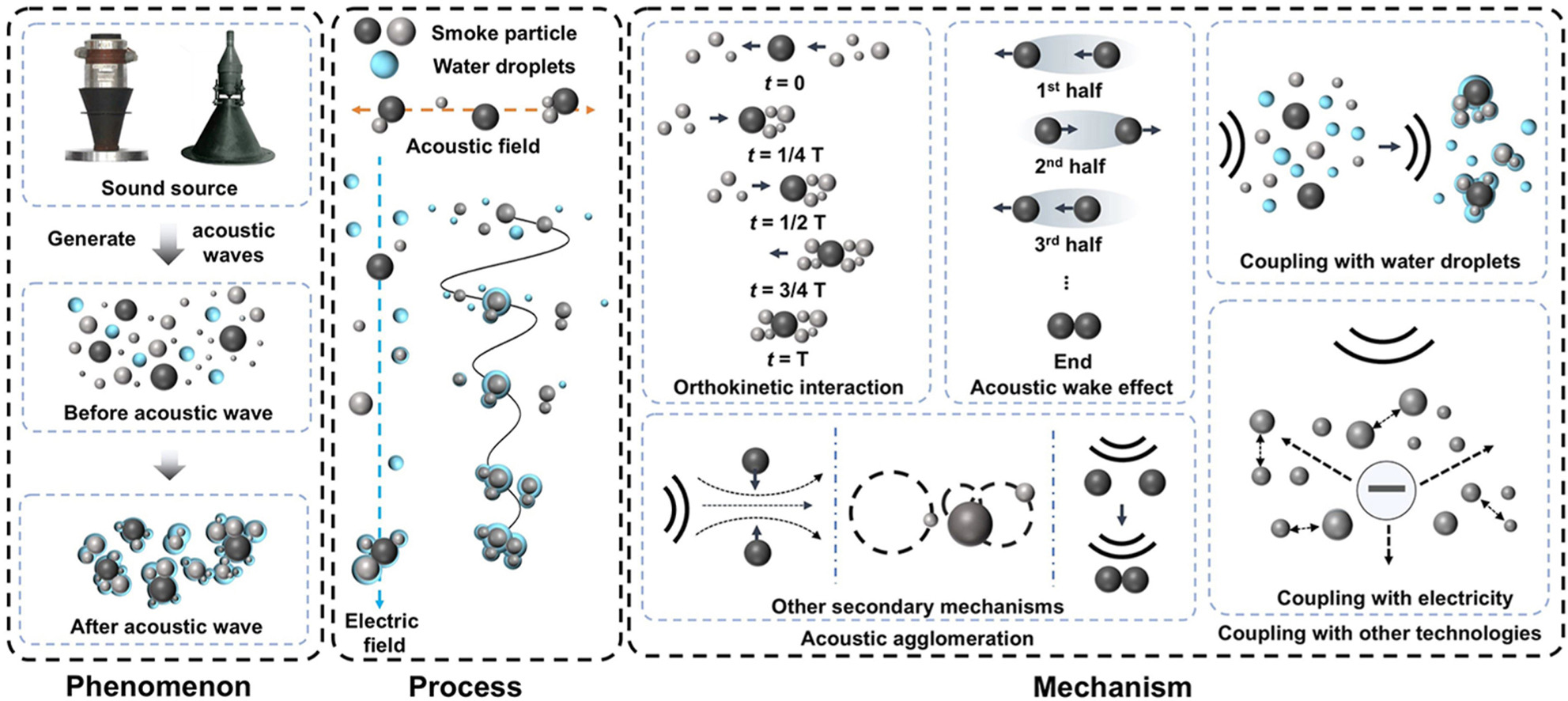• Recent advancements in acoustic agglomeration for fire smoke control are reviewed.
• Effects of acoustic frequency,intensity,and sound sources are discussed.
• Effects of coupling acoustic agglomeration with droplets or electric fields are explored.
The increasing complexity of urban buildings has significantly heightened fire risks, posing serious threats to public safety. In the event of a fire, smoke particles scatter and absorb light, drastically reducing visibility and greatly endangering trapped individuals. Existing smoke control methods face notable limitations. Natural ventilation is susceptible to environmental conditions. Solid obstructions such as firewalls can impede evacuation. Fine water mist may remain suspended in air and reduce visibility. Moreover, these approaches do not directly control smoke particles, so there is a need for innovative solutions. Acoustic agglomeration, which leverages high-intensity acoustic fields to induce relative motion among smoke particles and facilitate rapid agglomeration, is a promising technology for improving visibility in smoke-filled environments. It operates independently of ambient conditions, does not require solid barriers, and introduces no additional particles, which underscores its advantages for evacuation and rescue. This review synthesizes the development,mechanisms,operating parameters,sound sources,and hybrid strategies of acoustic agglomeration for fire smoke control,identifies remaining gaps,and assesses feasibility. The insights are intended to support researchers and decision-makers in advancing more effective smoke control strategies.

